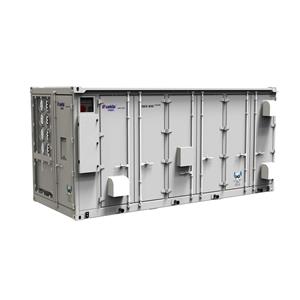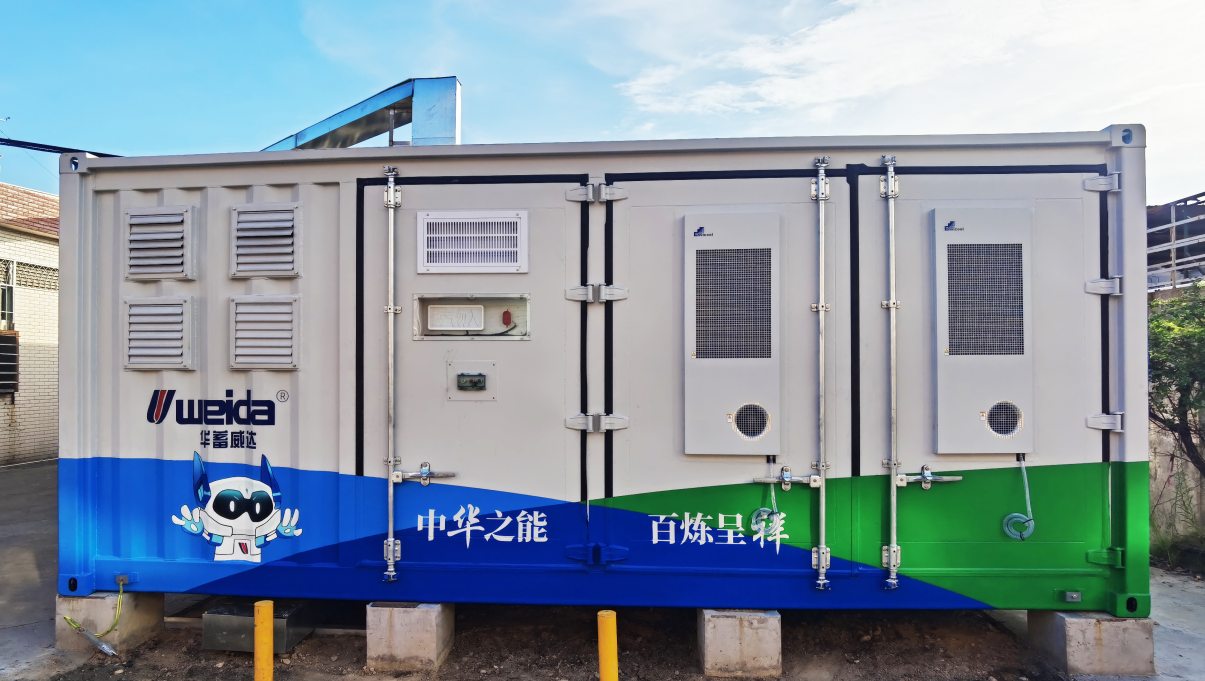Europe Commercial and Industrial Energy Storage Market Analysis
I.Importance and current status of the European commercial and industrial energy storage market
The European commercial and industrial energy storage market has an important position and potential in the context of today's energy transition. With the rapid development of renewable energy sources and the smartening of power networks, C&I energy storage is recognized as a key element in achieving sustainable energy supply and energy system flexibility.
First and foremost, the importance of the European C&I energy storage market lies in its contribution to the reliability and stability of energy supply. With the large-scale deployment of renewable energy sources, such as wind and solar, energy generation has become more decentralized and unpredictable. The introduction of energy storage technologies can help balance the difference between energy supply and demand, address the challenges posed by the volatility of renewable energy sources, and ensure the stable operation of power systems.
Second, the commercial and industrial energy storage market is also important for optimizing energy use and reducing energy costs. The commercial and industrial sectors typically have high energy demand and load patterns with large peak-to-valley differences. Through the application of energy storage technology, companies and factories can store cheap electricity during low electricity prices and release the stored energy to meet high load demand during peak hours, thus reducing energy procurement costs and improving energy utilization efficiency.
In addition, the European commercial and industrial energy storage market offers vast opportunities for innovation and economic development. Continuous advancements in energy storage technologies and cost reductions provide opportunities for businesses and innovative companies to develop new products and services. The growth of the energy storage market also promotes the development of related industrial chains, including the fields of energy storage equipment manufacturing, system integration, operation and maintenance, offering good prospects for employment and economic growth.
However, the European commercial and industrial energy storage market still faces a number of challenges, such as limitations in terms of technology costs, policy environment and market size. Therefore, concerted efforts from government, industry, and research organizations are needed to drive innovation and market diffusion of energy storage technologies and to establish a sound policy and regulatory framework to support the healthy development of the C&I energy storage market.
The European commercial and industrial energy storage market plays an important role in the process of energy transition. By providing reliability of energy supply, reducing energy costs and promoting innovation and economic development, the C&I energy storage market makes an important contribution to the realization of a sustainable energy future and the flexibility of energy systems.
Europe Commercial and Industrial Energy Storage Market Analysis

II. Overview of the European commercial and industrial energy storage market
A. Concept and scope of commercial and industrial energy storage
Commercial and industrial energy storage refers to the processes and systems that utilize a variety of technologies and equipment to store electrical energy in the commercial and industrial sectors. It encompasses a range of technologies and applications designed to provide reliability, flexibility and economy of energy supply.
Commercial and industrial energy storage is broad in scope and includes, but is not limited to, the following forms:
1. Battery energy storage systems: Battery energy storage is one of the most common and widely used commercial and industrial energy storage technologies. It utilizes energy storage devices such as lithium-ion batteries, sodium-sulfur batteries, and lead-acid batteries to convert electrical energy into chemical energy and store it. These battery systems can release the stored energy when needed to meet peak load demand or to cope with fluctuations in the power system.
2. Thermal storage systems: Thermal storage technologies meet heating, cooling, or process heat needs in commercial and industrial sectors by converting electrical energy into thermal energy and storing it. Common thermal storage technologies include thermal storage tanks, heat pumps and thermal storage rock systems.
3. Hydrogen storage systems: Hydrogen storage technologies are widely used in commerce and industry by converting electrical energy into hydrogen using electrolysis of water and storing the hydrogen. Hydrogen storage systems can convert stored hydrogen into electrical energy supply through fuel cells or internal combustion engines when needed.
4. Compressed air energy storage systems: Compressed air energy storage is a technology that converts electrical energy into compressed air and stores it to supply the energy needs of the commercial and industrial sectors. By releasing the compressed air when needed, a turbine can be driven to generate electricity or meet other energy needs.
5. Flow battery energy storage systems: Flow batteries are a technology that converts electrical energy into chemical energy and stores it in a solution. These systems store two electrolytes separately and produce electrical energy through an electrochemical reaction when needed.
Commercial and industrial energy storage systems are used in a wide range of applications including, but not limited to, the following areas: commercial buildings, industrial production, energy management, grid conditioning, backup power and microgrids. By flexibly utilizing these energy storage technologies, the C&I sector can achieve reliability, economy and sustainability of energy supply and contribute to energy transition and sustainable development.
Commercial and Industrial Energy Storage

B. European Commercial and Industrial Energy Storage Market Size and Growth Trends
The European commercial and industrial energy storage market is showing a sizable size and continuous growth trend. With the rapid development of renewable energy and the promotion of energy transition, the application of energy storage technology in the commercial and industrial fields is gradually expanding, creating favorable conditions for the development of the market.
According to market research and forecasts, the size of the European commercial and industrial energy storage market has grown significantly and is expected to continue to expand in the coming years. According to the European Energy Storage Association, the total installed capacity of the commercial and industrial energy storage market in Europe reached 2.3 GW in 2018, while by 2023, the market is expected to grow to over 13 GW. This shows the growing importance of the energy storage market in the European energy system.
The trend of growth in the energy storage market can be attributed to several factors. Firstly, support and policy initiatives by governments and energy agencies have played a key role in driving the market. Various European countries have formulated policies and regulations related to energy storage, including providing financial incentives, setting targets and standards, and streamlining the approval process, which have provided the necessary support for the growth of the energy storage market.
Secondly, technological advancements and declining costs are also driving the growth of the energy storage market. With the continuous improvement in battery technology and reduction in cost, the commercial and industrial sectors are able to adopt energy storage systems more economically. In addition, other energy storage technologies such as thermal, hydrogen, and compressed air energy storage are also evolving and providing diverse options to the market.
In addition, the rapid growth of renewable energy sources and the transformation of the power system are also creating opportunities for the energy storage market. The volatility and unpredictability of renewable energy sources require greater flexibility and regulation of the power system, and energy storage technology is an effective tool to fulfill this need. Energy storage systems can help balance the difference between power supply and demand, provide a reliable energy supply, and support large-scale integration of renewable energy sources.
The European commercial and industrial energy storage market is developing at a significant scale and continuing to grow. Government support, technological advancements and cost reductions, and the need for energy transition are driving the market's dynamic growth. As energy storage technologies continue to mature and the market develops further, the European commercial and industrial energy storage market is expected to continue to expand in the future and make a greater contribution to the energy transition and sustainable development.
Commercial and Industrial Energy Storage Market
C. Market situation in key countries and regions
In the commercial and industrial energy storage market, a number of key countries and regions play an important role in driving the market. The following is a brief overview of the market situation in some of the key countries and regions:
1. Germany: Being one of the largest economies in Europe, Germany has been one of the leaders in the energy storage market. The German government has promoted the energy storage market through a series of policies and regulations, including electricity market reforms, energy storage subsidies, and renewable energy laws. Germany's energy storage market focuses on battery energy storage and thermal storage systems, especially in distributed energy systems and industrial sectors.
2. UK: The UK is also one of the key players in the European energy storage market. The UK government encourages the construction and development of energy storage projects through competitive bidding and financial incentives. The UK energy storage market is focused on technologies such as lithium-ion batteries and liquid flow batteries, which are mainly used in power system regulation, standby power and commercial sectors.
3. France: France has also taken active measures in the energy storage market. The French government has formulated an energy storage development program and provided support measures and incentives to drive market growth. The French energy storage market focuses on areas such as power system regulation, energy management, and synergistic energy projects.
4. U.S.: As the global leader in the energy storage market, the U.S. has a wide range of market sizes and applications for commercial and industrial energy storage. The U.S. energy storage market is supported and incentivized by federal and state governments and covers a wide range of technologies and applications, including battery storage, thermal storage systems, and compressed air energy storage.
5. China: China is one of the largest energy storage markets in the world and has also made significant progress in commercial and industrial energy storage. The Chinese government promotes the development of the energy storage market through policy support, bidding competition and market-based mechanisms. The energy storage market in China is mainly focused on battery storage technology for applications such as grid conditioning, distributed energy and microgrids.
Apart from the above mentioned countries and regions, other countries such as Japan, South Korea, Australia, and Canada are also playing a significant role in the commercial and industrial energy storage market and are committed to driving market growth and innovation.
The market conditions in these countries and regions are unique, but all of them have demonstrated their focus and investment in energy storage technologies. Through government support, policy incentives, and market competition, these countries and regions have continued to drive the development of the commercial and industrial energy storage market, contributing positively to the integration of renewable energy, energy transition, and sustainable development.
Europe Commercial and Industrial Energy Storage Market Analysis

III. Policy and regulatory environment
A. Evolution of commercial and industrial energy storage policies in Europe
European commercial and industrial energy storage policies have undergone significant evolution over the past few years to promote the adoption and market development of energy storage technologies. The following are some of the major policy evolutions:
1. Financial incentives: many European countries have adopted financial incentives to promote the development of the C&I energy storage market. These incentives include subsidies, incentives, and funding programs designed to reduce the cost and risk of energy storage systems. Over time, some countries have gradually reduced their reliance on subsidies in favor of more market-based mechanisms, such as competitive bidding and tendering and electricity market reforms, to achieve more sustainable and competitive energy storage markets.
2. Regulations and policy objectives: European countries have developed energy storage-related regulations and policy objectives to promote the application and market development of energy storage technologies. These regulations and targets cover a wide range of aspects, including energy market reform, power system flexibility, renewable energy integration, and carbon emission reduction. By setting targets and standards, the government encourages companies and organizations to adopt energy storage systems and promotes market growth and innovation.
3. Streamlining the permitting process: In order to reduce the construction cost and time of energy storage projects, many European countries have taken measures to streamline the permitting process. Governments have simplified the process of setting up and operating energy storage projects by optimizing the permitting process, reducing administrative barriers, and providing a package of services. This has helped attract more investment and promote rapid market development.
4. Network rules and market mechanisms: European countries are gradually reforming their electricity markets and network rules to accommodate the rapid development of energy storage technologies. These reforms include the establishment of flexible market mechanisms so that energy storage systems can participate in market operations and energy trading. In addition, the reforms include improving grid access and service capabilities for energy storage systems to support stable power system operation and renewable energy integration.
5. R&D and innovation support: European countries and the EU have also increased their R&D and innovation support in the field of energy storage. By funding research projects, establishing R&D centers and providing technical support, governments encourage the development of new technologies and solutions and promote innovation and competitiveness in the energy storage market.
European industrial and commercial energy storage policy has undergone an evolution from fiscal incentives to market-based mechanisms and from simplified approvals to electricity market reform. Through regulations, targets and support measures, governments have created a favorable environment for the application and market development of energy storage technologies. With the continuous adjustment and maturation of policies, the European industrial and commercial energy storage market is expected to further expand and make a greater contribution to energy transition and sustainable development.
Commercial and Industrial Energy Storage

B. Supporting Policies and Regulations at EU and National Levels
In Europe, a number of supporting policies and regulations have been introduced to promote the development and application of energy storage technologies, including the EU and member states. The following are some important policies and regulations:
1. European Green Deal: The European Union enacted the European Green Deal in 2019, which aims to achieve carbon neutrality and sustainable development goals. The agreement recognizes energy storage technology as a key component and sets specific targets, including increasing energy storage capacity to more than 100GW by 2030. The European Green Deal provides clear policy guidance for the energy storage market and promotes cross-border cooperation and technological innovation.
2. National energy policies: European countries have developed specific energy policies and programs to support the development of energy storage technologies. These policies include energy transition targets, renewable energy quotas, electricity market reforms and energy storage capacity targets. By setting targets and formulating measures, governments encourage enterprises and investors to invest in energy storage and provide corresponding financial incentives and support measures.
3. Subsidies and incentives: Many European countries have adopted subsidies and incentives to reduce the economic risks of energy storage projects and provide financial support. These mechanisms include subsidy programs, energy storage certificates, and competitive bidding. By providing financial incentives to energy storage projects, governments encourage investors to expand storage capacity and promote the market adoption and commercialization of energy storage technologies.
4. Network rules and market design: The EU and member states are reforming electricity markets and network rules to accommodate the rapid development of energy storage technologies. These reforms include the development of flexible market mechanisms that allow energy storage systems to participate in energy trading and provide flexibility services. In addition, the reforms involve changes in grid access rules to improve the accessibility and operational flexibility of energy storage systems.
5. R&D and innovation support: The EU and national governments support R&D and innovation in energy storage technologies by financing research projects, setting up innovation funds and providing technical support. These support measures encourage the development of new technologies and solutions and promote the competitiveness and sustainable development of the energy storage market.
Through supportive policies and regulations at the EU and national level, Europe is actively promoting the development and market adoption of energy storage technologies. These policies and regulations provide clear direction and financial support to investors, facilitating the growth of the energy storage market and promoting the integration of renewable energy sources, the energy transition, and carbon reduction goals.
Commercial and Industrial Energy Storage Market

C. Impact and Prospects for the Commercial and Industrial Energy Storage Markets
The C&I energy storage market has been actively supported by policies and regulations in Europe, and these initiatives have had a significant impact on the market and have opened up many opportunities for the future of C&I energy storage. The following is a description of the impact and outlook for the C&I energy storage market:
1. Market growth: The European commercial and industrial energy storage market has experienced rapid growth over the past few years, largely due to supportive government policies and regulations. Initiatives such as financial incentives, streamlined approval processes, and market reforms have reduced the cost and risk of energy storage projects, attracting more and more investors and companies to enter the market. The commercial and industrial energy storage market is expected to continue its strong growth momentum in the coming years.
2. Flexibility and energy management: Commercial and industrial energy storage provides businesses with greater flexibility and the ability to manage energy. Energy storage systems can help companies reduce energy costs by purchasing cheap power when electricity prices are high and releasing energy when demand peaks. In addition, energy storage technology can provide backup power and emergency power to ensure normal business operations in the event of a power outage or grid failure. These advantages are driving more and more commercial and industrial users to adopt energy storage systems to improve energy efficiency and reduce operational risks.
3. Renewable Energy Integration: With the rapid growth of renewable energy, commercial and industrial energy storage plays an important role in renewable energy integration. Energy storage systems can balance the intermittency and volatility of renewable energy sources, providing flexibility and stability to ensure a high percentage of renewable energy is integrated into the power system. Commercial and industrial users can utilize energy storage systems to store and utilize their own renewable energy sources, increasing self-sufficiency while reducing dependence on conventional energy sources.
4. Innovation and technology development: The growth of the commercial and industrial energy storage market has also driven innovation and technology development. Increased investment and policy support have stimulated more R&D activities and technological innovation. New energy storage technologies, intelligent control systems and software solutions are emerging, improving the efficiency, reliability and sustainability of energy storage systems. This innovation momentum is helping to further reduce the cost of energy storage systems and expand the range of applications in the energy storage market.
The commercial and industrial energy storage market has a huge potential for growth in Europe. Policy and regulatory support has contributed to market growth, the flexibility and energy management capabilities of energy storage systems meet the needs of businesses, and renewable energy integration and technological innovation have driven further expansion of the energy storage market. With the maturity of technology and further cost reductions, the commercial and industrial energy storage market is expected to continue to thrive in the coming years and make a significant contribution to the energy transition and sustainable development.
Europe Commercial and Industrial Energy Storage Market Analysis

IV. Technology and innovation
A. Developments and trends in energy storage technologies
Energy storage technologies are experiencing rapid development in Europe and globally and are demonstrating a number of important trends and potential directions. The following is a description of developments and trends in energy storage technology:
1. Increase in energy storage capacity: With the energy transition and the rapid growth of renewable energy sources, energy storage capacity is a key development. Europe aims to increase energy storage capacity to more than 100GW to support large-scale integration of renewable energy and power system flexibility. Continuous innovation and cost reduction in energy storage technologies have made more energy storage projects feasible, including battery storage, pumped storage, and compressed air storage.
2. Intelligent and digital: Energy storage technologies are becoming increasingly intelligent and digital to improve system efficiency, flexibility and controllability. Technologies such as intelligent control systems, advanced energy management software and artificial intelligence are being applied to energy storage systems for real-time monitoring, optimized operation and forecasting of energy demand. This trend towards intelligence and digitization helps to improve the performance of energy storage systems and seamlessly integrate them with other energy facilities and the grid.
3. Multi-energy networking and integrated energy systems: Energy storage technologies are gradually being networked with other energy facilities and energy systems to form integrated energy systems. Through the flexibility and responsiveness of energy storage technologies, multiple forms of energy such as electricity, heat and gas can be integrated and optimized. The development of such integrated energy systems can help improve energy efficiency, reduce carbon emissions and promote sustainable energy development.
4. Sustainability and environmental friendliness: One of the trends in energy storage technology is the pursuit of greater sustainability and environmental friendliness. In the design and operation of energy storage systems, more and more attention is being paid to the renewability of materials, the saving and recycling of resources, and the life cycle environmental impact of the system. For example, battery technologies with renewable materials are being developed and applied to reduce dependence on finite resources and minimize environmental risks.
5. Innovation in energy markets and business models: The development of energy storage technologies also drives innovation in energy markets and business models. The flexibility and energy management capabilities of energy storage systems provide opportunities for new energy trading mechanisms and energy service models. For example, the emergence of the virtual power plant model, which integrates decentralized energy storage systems into a virtual portfolio of energy assets to provide flexibility services and market transactions.
Energy storage technology is in a phase of rapid development and is showing several important trends. Increasing energy storage capacity, intelligence and digitization, multi-energy networking and integrated energy systems, sustainability and environmental friendliness, as well as innovations in energy markets and business models will have a profound impact on the future development of energy storage technologies. These trends will facilitate the maturation and commercialization of energy storage technologies and provide critical support for energy transition and sustainable development.
Commercial and Industrial Energy Storage
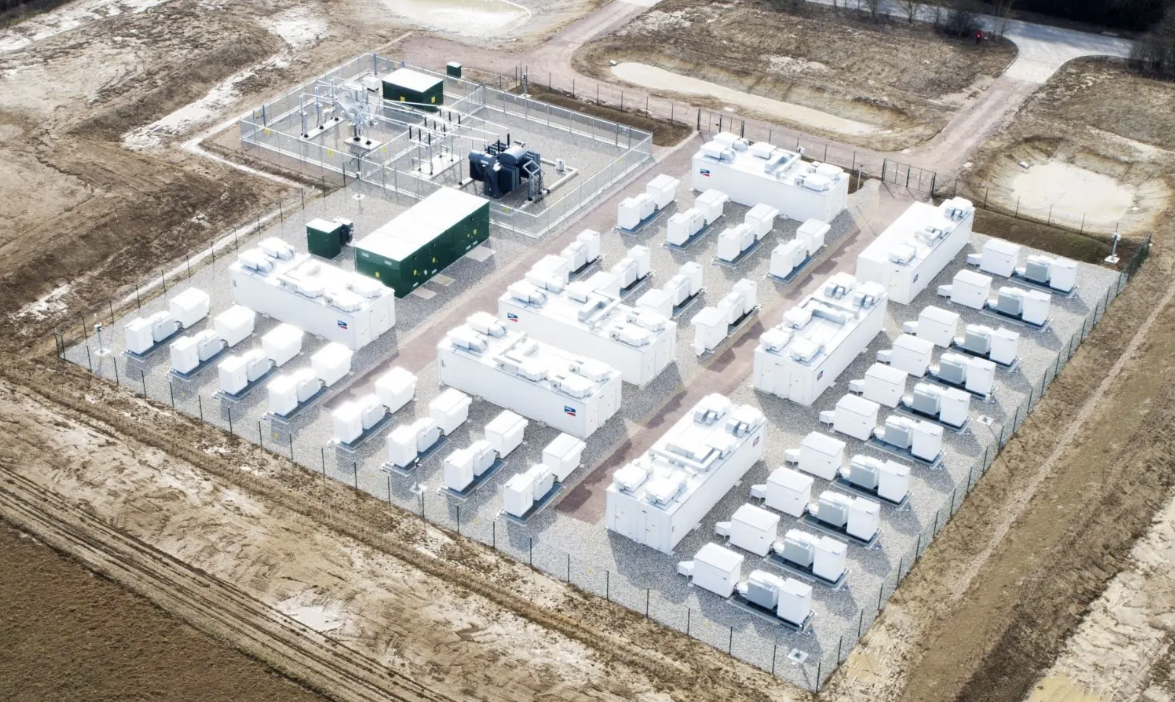
B. Application Cases of Energy Storage Technology in Industrial and Commercial Sectors
There are a growing number of use cases of energy storage technologies in the commercial and industrial sectors, providing organizations with solutions for flexibility, energy management and sustainability. The following are a few examples of the application of energy storage technology in the commercial and industrial sectors:
1. Energy cost management: Energy storage technology can help companies reduce energy costs and optimize energy use. By charging during low tariff periods, companies can release energy from their storage systems during high tariff periods, reducing their dependence on expensive grid power. This energy cost management use case is particularly applicable to industrial companies that require large amounts of energy, such as the steel, manufacturing and chemical industries.
2. Energy Backup and Emergency Power: Energy storage technologies provide businesses with the ability to provide backup power and emergency power to ensure normal operations in the event of a power outage or grid failure. Commercial and industrial users can install energy storage systems and combine them with renewable energy systems, such as solar photovoltaic systems or wind turbines, to ensure a reliable supply of back-up power and reduce the risk of production interruptions.
3. Peak shaving and power balancing: Energy storage technologies play an important role in peak shaving and power balancing. Commercial and industrial enterprises usually require large amounts of energy at specific times of the day, while demand is low at other times. Energy storage systems can charge at low load times and release stored energy at high load times to balance energy demand, reduce peak power demand for businesses, and reduce stress on the grid.
4. Renewable Energy Integration: Energy storage technology is used for renewable energy integration in the commercial and industrial sectors. Enterprises can combine solar photovoltaic systems, wind turbines or other renewable energy systems with energy storage systems to achieve self-sufficient energy supply. Energy storage systems can store and balance the intermittent nature of renewable energy sources, ensuring that businesses utilize renewable energy sources in a stable manner and reduce their dependence on traditional energy sources.
5. Energy Service Contracts (ESCOs): Energy storage technologies can be provided to businesses as part of an Energy Service Contract (ESCO). ESCOs provide energy storage systems to businesses and charge fees based on actual energy savings and energy management results. The installation and operation of the energy storage system is the responsibility of the ESCO, and the enterprise can benefit from the energy saving and energy management benefits while reducing initial investment and risk.
These use cases demonstrate the diverse and innovative applications of energy storage technology in the commercial and industrial sectors. Through energy cost management, energy backup and emergency power supply, peak shaving and power balancing, renewable energy integration, and energy service contracts, energy storage technologies provide effective energy solutions for businesses, promoting energy efficiency and sustainable development. It is expected that as energy storage technologies continue to develop and mature, more innovative use cases will emerge in the commercial and industrial sectors.
C. Market impact of emerging technologies and innovations
Emerging technologies and innovations have had a profound impact on the market, especially in the energy sector. The following is a description of the market impact of emerging technologies and innovations:
1. Clean energy and sustainable development: Emerging technologies and innovations play an important role in driving clean energy and sustainable development. The rapid development of renewable energy technologies, such as solar photovoltaic (PV), wind, and tidal, has transformed the traditional energy market landscape. The falling costs and increasing efficiency of these emerging technologies are making clean energy an increasingly economically viable alternative energy option, driving a shift in the energy market towards greater sustainability.
2. Revolution in energy storage technologies: Innovations in energy storage technologies have revolutionized the energy market. One of the challenges facing conventional energy systems is the problem of intermittent energy sources, such as the instability of solar and wind power. However, with advances in battery technology and falling costs, energy storage technologies are key to solving the intermittent energy challenge. The application of energy storage technologies makes the consumption and utilization of renewable energy more flexible and reliable, bringing greater sustainability and reliability to the energy market.
3. Digital and smart revolution: The rapid development of digital and smart technologies has had a profound impact on the market. Monitoring, management and optimization of energy systems have become smarter and more efficient through technologies such as IoT, artificial intelligence and big data analytics. This digital and intelligent revolution has changed the way the energy market operates, improved the efficiency and controllability of the energy system, and created more business opportunities and room for innovation for energy market participants.
4. Market competition and start-ups: Emerging technologies and innovations are intensifying market competition and driving the emergence of start-ups. Traditional energy companies face competitive challenges from emerging technology providers such as renewable energy and energy storage technologies. Emerging companies are utilizing innovative technologies and business models to enter the market quickly and provide more competitive solutions. This market competition and the emergence of emerging players has prompted traditional energy companies to accelerate the pace of innovation to drive market growth and transformation.
Emerging technologies and innovations are having a significant impact on the energy market. The drive for clean energy and sustainability, the revolution in energy storage technology, the digital and smart revolution, and the emergence of market competition and emerging companies have changed the landscape of the energy market and the way it operates. The energy market is expected to continue to see more changes and opportunities as emerging technologies continue to evolve and drive innovation.
Commercial and Industrial Energy Storage Market
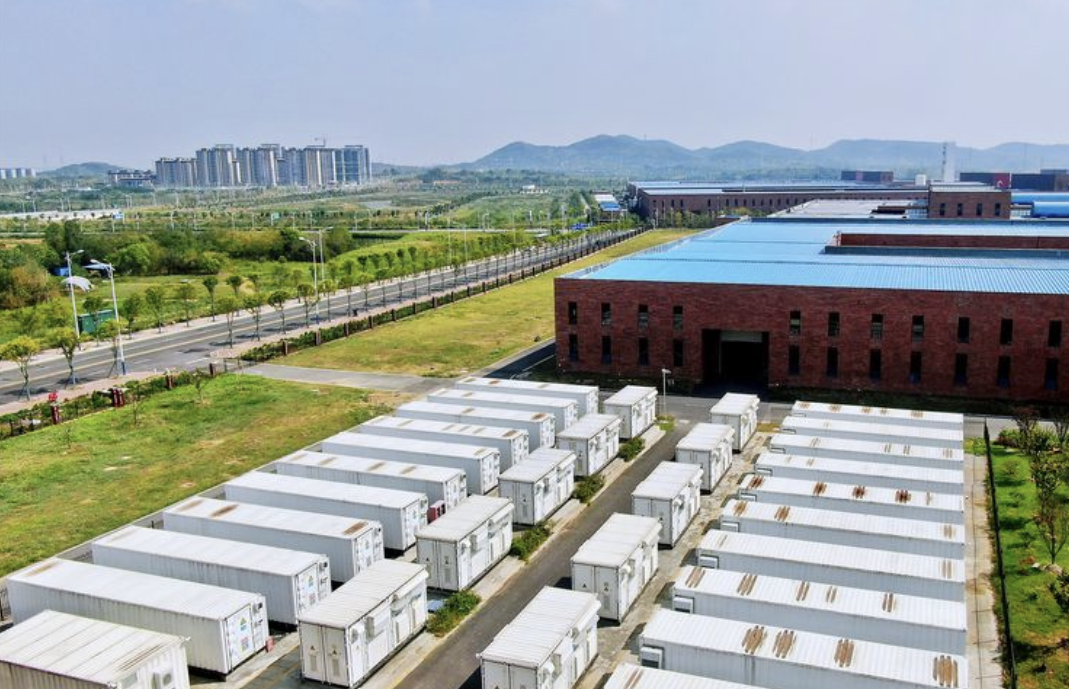
V. Market competition and players
A. Overview of major market participants (companies, investors, etc.)
The energy market involves many major players, including companies, investors, and government agencies. The following is an overview of these major market participants:
1. Companies:
- Traditional energy companies: traditional energy companies are key players in the energy market, including oil and gas companies, electric utilities, and coal companies, among others. These companies usually play a key role in the traditional energy chain with operations such as resource development, energy production and distribution.
- Emerging Energy Companies: With the rise of clean energy, emerging energy companies are making their presence felt in the energy market. These companies focus on the development and utilization of renewable energy sources such as solar photovoltaic, wind, and bioenergy. They are committed to providing more sustainable and environmentally friendly energy solutions.
2. Investors:
- Venture capitalists: Venture capitalists play an important role in the energy market by providing financial support for emerging technologies and innovative energy projects. These investors typically seek out promising energy start-ups and help them commercialize and market them through investment and financial support.
- Institutional investors: Institutional investors such as pension funds, insurance companies and investment funds play an important role in the energy market. They participate in the operation of the energy market and earn returns by investing in stocks, bonds and funds of energy-related companies.
3. Government agencies:
- Energy sector: The energy sector is the organization that formulates and implements energy policies. They are responsible for regulating energy markets and promoting energy transition and sustainable development. The energy sector works with businesses to develop policies and regulations to promote the development and utilization of renewable energy.
- Environmental Protection Agencies: Environmental protection agencies play a role in regulating and protecting the environment in energy markets. They look at the environmental impacts of the energy industry, monitor and assess environmental impacts, and ensure that companies comply with environmental regulations and standards.
Together, these major market players shape the landscape and direction of the energy market. Traditional energy companies continue to play a dominant role, while the rise of emerging energy companies is driving the energy transition. Investors provide financial support for new technologies and innovations, and government agencies develop policies and regulations that drive the sustainability of the energy market. The synergy of these players will drive the energy market towards a more sustainable, environmentally friendly and innovative direction.
B. Competitive Landscape and Trends in the C&I Energy Storage Market
The competitive landscape and trends in the commercial and industrial energy storage market are influenced by emerging technologies and innovations and are characterized by the following:
1. competitive landscape:
- Emergence of Emerging Companies: as energy storage technologies evolve and costs fall, more and more emerging companies are entering the commercial and industrial energy storage market. These companies usually focus on providing innovative energy storage solutions such as lithium-ion batteries, flow batteries, and compressed air energy storage. They compete for the market share of traditional energy companies with flexible, efficient and reliable energy storage systems.
- Competition from traditional energy companies: Traditional energy companies are also actively involved in the competition in the commercial and industrial energy storage market. They utilize their own resources and experience to launch energy storage products and solutions for market expansion. Some traditional energy companies cooperate with emerging companies through acquisition or cooperation in order to accelerate the application and promotion of energy storage technology.
2. Technology innovation:
- New energy storage technologies: The commercial and industrial energy storage market continues to see the emergence of new energy storage technologies, such as solid-state batteries, hydrogen energy storage and thermal energy storage. The emergence of these technologies has driven the performance improvement and cost reduction of energy storage systems, providing more options and competitive advantages.
- Intelligent and digital: The commercial and industrial energy storage market is trending towards intelligence and digitalization. Through technologies such as IoT, artificial intelligence, and big data analytics, energy storage systems enable remote monitoring, intelligent optimization, and predictive analytics. This trend towards intelligence and digitization improves the efficiency and controllability of energy storage systems and meets users' needs for flexible energy management.
3. Energy transition and policy support:
- Renewable Energy Integration: The commercial and industrial energy storage market plays a key role in the energy transition. With the rapid development of renewable energy, energy storage technologies are widely used in renewable energy systems such as photovoltaic and wind, addressing the challenge of intermittent energy sources. This integration of renewable energy sources has led to the rapid growth of the commercial and industrial energy storage market.
- Policy support and incentives: Governments have provided policy support and incentives such as subsidies, tax credits, and capacity markets to the commercial and industrial energy storage market. These policy measures encourage investors and companies to innovate and invest in energy storage and drive market competition and growth.
The competitive landscape of the commercial and industrial energy storage market is characterized by the emergence of emerging companies and competition from traditional energy companies. In terms of technological innovation, the emergence of new energy storage technologies and the trend toward intelligence and digitization are driving the market. Energy transition and policy support provide growth opportunities for the commercial and industrial energy storage market. With the introduction of new technologies and further optimization of the policy environment, the commercial and industrial energy storage market is expected to continue to be highly competitive and make a significant contribution to energy transition and sustainable development.
C. Strategies and Market Share of Various Players
Various players are adopting different strategies in the commercial and industrial energy storage market to compete for market share and gain competitive advantage:
1. Emerging Companies Strategy:
- Technological Innovation: Emerging players are committed to technological innovation to provide more efficient, reliable, and cost-effective solutions by developing and improving energy storage technologies. They continue to introduce new energy storage products and improve product performance to meet user needs.
- Flexibility and customization: Emerging companies focus on flexibility and customization capabilities to meet the specific needs of different industries and users by providing personalized energy storage solutions to their customers. This enables them to gain a competitive advantage in the market.
- Collaboration and Partnerships: Emerging companies often form partnerships with other companies, such as energy service companies, system integrators, and electric utilities. Such partnerships can expand market channels, provide technical support and share resources to help emerging companies expand their market share.
2. traditional energy company strategy:
- Diversify Energy Portfolio: Traditional energy companies diversify by integrating energy storage technologies into their existing energy portfolios. They utilize their experience and resources in energy production and distribution to provide integrated energy solutions in the energy storage market.
- Acquisitions and partnerships: Some traditional energy companies are choosing to partner with emerging companies through acquisitions or partnerships to gain access to energy storage technologies and expertise. This strategy can accelerate the penetration of traditional energy companies in the energy storage market and quickly launch competitive products and services.
- Brand strength and credibility: Traditional energy companies typically have strong brand strength and a broad customer base. They leverage their reputation and market influence to build trust in the energy storage market, attract customers and maintain market share.
3. investor strategy:
- Look for Innovative Companies: Investors look for innovative companies with potential in the commercial and industrial energy storage market, especially those with unique technologies and business models. They help these companies commercialize and grow market share through investment and financial support.
- Diversified portfolios: investors often diversify their risk and gain broader participation in the market by investing in multiple energy storage companies. They invest in energy storage projects across different technologies, regions, and market segments to diversify their portfolios and maximize returns.
The strategy and market share of each participant depends on their innovation capabilities, resource strengths, and market acceptance. As the commercial and industrial energy storage market grows and competition intensifies, it is expected that emerging players will continue to increase their market share, traditional energy companies will strengthen their cooperation with emerging players, and investors will continue to look for promising investment opportunities.
VI. Challenges and opportunities
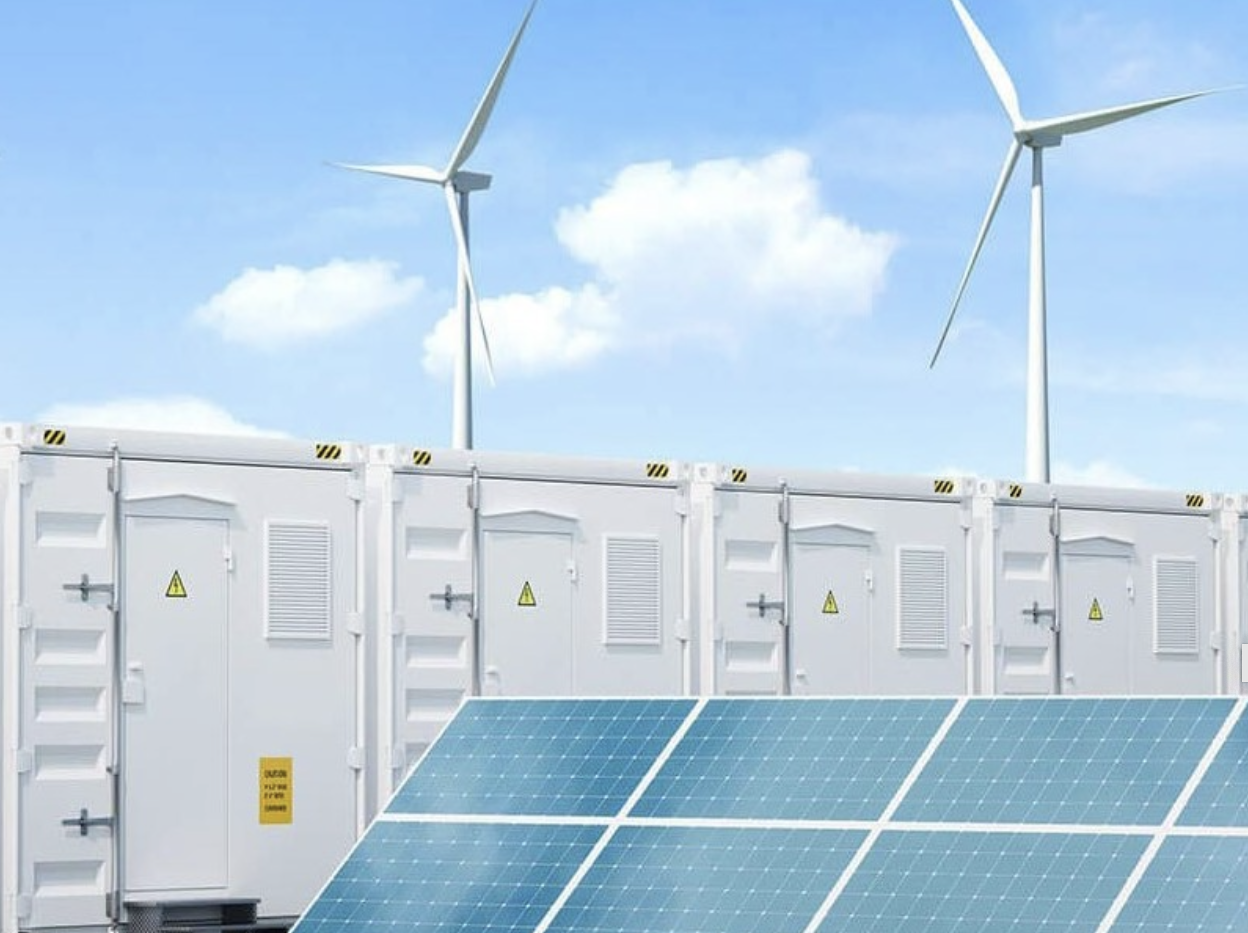
A. Key challenges facing the market (technical, economic, regulatory, etc.)
The commercial and industrial energy storage market faces a number of major challenges which are related to technical, economic and regulatory aspects:
1. Technical Challenges:
- Cost of energy storage technologies: although the cost of energy storage technologies is gradually decreasing, it remains a significant challenge. Especially for emerging technologies and innovative solutions, their costs may still be high, limiting their widespread application and penetration in the commercial and industrial energy storage markets.
- Energy storage capacity and efficiency: The capacity and efficiency of energy storage systems are critical to meeting user demand and achieving economic viability. Technical challenges include increasing the capacity density of energy storage systems, extending storage time, and improving storage efficiency to meet the needs of different industries and applications.
2. economic challenges:
- ROI: In some cases, the ROI of energy storage projects may remain low, limiting investor interest and capital inflow. The high cost and operating expenses of energy storage systems may have an impact on economic viability, requiring further cost reductions and improved business models.
- Market Pricing Mechanisms: Market pricing mechanisms are critical to the development and profitability of the energy storage market. However, current energy market pricing mechanisms may not be adapted to the characteristics of energy storage systems, such as flexibility, response time and storage and release of power. Pricing mechanisms more adapted to the energy storage market need to be developed to facilitate market development and return on investment.
3. Regulatory challenges:
- Lack of clear policy support: Although many countries and regions have introduced some policy support and incentives, there is still a lack of clear policies. The development and market scale of energy storage technologies require stable and long-term policy support to encourage investment and market development.
- Network Connectivity and Norms: The connection and integration of energy storage systems requires norms and standards that match the power network. Lack of harmonized network connectivity norms and standards may lead to technical compatibility and network stability issues, limiting the application and expansion of energy storage systems.
Overcoming these challenges requires a combination of technological innovation, economic optimization, and policy support. By further reducing costs, improving efficiency, formulating adaptive policies, and improving market mechanisms, the commercial and industrial energy storage market is expected to overcome challenges and achieve sustainable development.
B. Opportunities and Prospects of Commercial and Industrial Energy Storage Markets
The commercial and industrial energy storage market faces vast opportunities and bright prospects, and the following are some key aspects:
1. Driving energy transition: With the increasing demand for clean energy and sustainable development worldwide, commercial and industrial energy storage, as one of the key technologies for energy transition, will play an important role in realizing the goal of renewable and sustainable energy. Energy storage systems can balance energy supply and demand, provide flexibility and stability, support large-scale integration of renewable energy sources, and promote the sustainable development of energy systems.
2. Enhancing the security of energy supply: Commercial and industrial energy storage can provide backup power and emergency power support, enhancing the stability and security of energy supply. For critical industries and infrastructures, such as healthcare organizations, communication networks and manufacturing plants, the application of energy storage systems can ensure continuous power supply and provide reliable backup power in the event of power interruptions or failures.
3. Power market flexibility and responsiveness: Commercial and industrial energy storage systems have the ability to respond quickly and be flexibly dispatched to effectively deal with power market fluctuations and demand peaks. Through the flexible scheduling and power storage release of the energy storage system, it can provide services such as power peaking, peak shaving and valley filling and power load balancing, bringing higher efficiency and reliability to the power market.
4. Market competition and innovation opportunities: With the continuous progress of energy storage technology and cost reduction, the commercial and industrial energy storage market will usher in more competition and innovation opportunities. Emerging companies can gain a competitive advantage in the market through technological innovation and customization capabilities. Traditional energy companies can expand their business areas by integrating energy storage technologies and diversifying their energy portfolios. Meanwhile, investors can enjoy market growth and returns by investing in promising energy storage companies.
5. Promotion of regional and international cooperation: The development of the commercial and industrial energy storage market requires cooperation and support at the regional and international levels. The energy transition and the promotion of energy storage technologies require close cooperation between governments, companies and research institutions to jointly develop policies, standards and technological innovation routes. By cooperating to promote the development of the energy storage market, resource sharing, experience exchange and market integration can be realized to promote the sustainable growth of the global commercial and industrial energy storage market.
The opportunities and prospects for the commercial and industrial energy storage market are vast. With the continuous promotion of technological advances, cost reductions and policy support, energy storage systems will play an important role in energy transition, energy supply stability and power market flexibility, contributing to sustainable development and economic prosperity.
Europe Commercial and Industrial Energy Storage Market Analysis
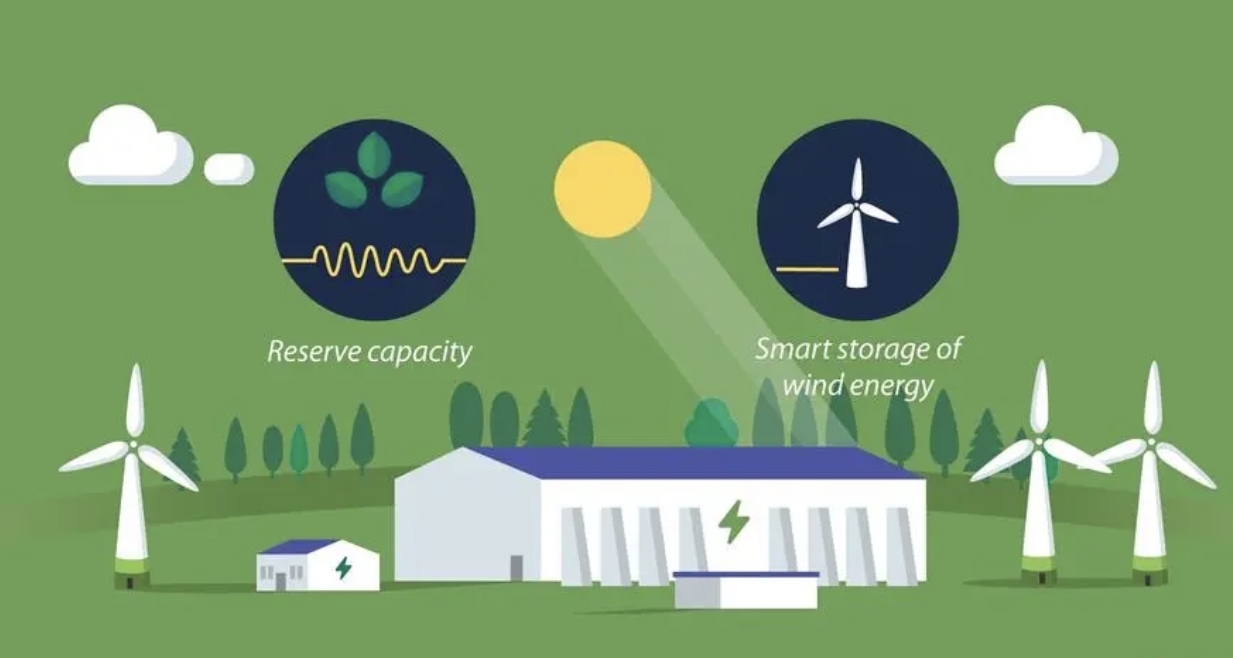
C. Possible directions and trends
The C&I energy storage market has a number of possible directions and trends, some key aspects of which are summarized below:
1. Technological innovation and diversification: The C&I energy storage market will continue to drive technological innovation and diversification. New energy storage technologies and solutions will continue to emerge, including higher capacity density battery technologies, new energy storage materials, and thermal energy storage technologies. In addition, the convergence of energy storage with technologies in other fields, such as artificial intelligence, the Internet of Things, and big data analytics, will bring new opportunities and business models to the market.
2. Scale-up and cost reduction: With the scale-up of the energy storage market and technological advancements, the cost of energy storage systems will further decline. Scaled production, process improvement and supply chain optimization will reduce the cost of equipment and components and improve the economic viability of energy storage systems. In addition, continuous R&D and innovation will further drive down costs and make energy storage technology more competitive.
3. System integration and intelligence: The commercial and industrial energy storage market will tend to be more advanced system integration and intelligence. Energy storage systems will be integrated with energy management systems, smart grids and distributed energy resources to achieve more efficient energy scheduling and management. Intelligent control algorithms and prediction models will provide more accurate energy storage and release strategies for energy storage systems, optimizing energy use and economic efficiency.
4. Energy market participation and business model innovation: The commercial and industrial energy storage market will participate more actively in the energy market and explore new business models and revenue mechanisms. Energy storage systems can provide flexibility services such as energy peaking, standby power, capacity markets and frequency regulation, and participate in the operation and trading of energy markets. In addition, innovative business models based on energy data and demand-side management will continue to emerge, providing users with more competitive energy solutions.
5. Sustainable development and environmental friendliness: the commercial and industrial energy storage market will increasingly focus on sustainable development and environmental friendliness. New energy storage technology will pay more attention to the renewability of resources and the reduction of environmental impact. At the same time, the flexible scheduling of energy storage systems and the improvement of energy efficiency will reduce the dependence on traditional power generation and distribution facilities, and promote the development of the energy system towards low-carbon and clean energy.
The commercial and industrial energy storage market will move toward technological innovation, cost reduction, system integration, business model innovation, and sustainable development. These trends will bring more opportunities and development space for the market, and promote the further growth and maturity of the energy storage market.
VII. Successful Cases and Best Practices
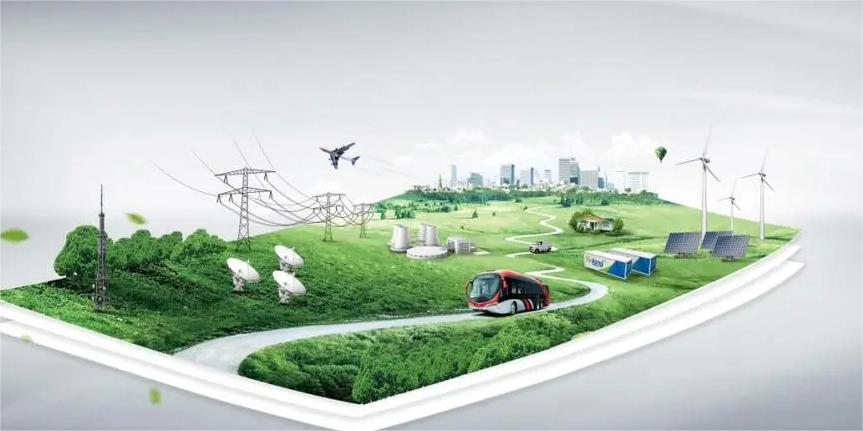
A. Successful Cases in European Commercial and Industrial Energy Storage Markets
Many successful cases have emerged in the European commercial and industrial energy storage market, and the following is one of the representative cases:
The Hornsdale Power Reserve project in Germany is a high-profile commercial and industrial energy storage project. Developed by Tesla in partnership with French energy company Neoen and located in South Australia, the Hornsdale Power Reserve is currently one of the largest lithium-ion battery storage projects in the world, with a capacity of 150 megawatts (MW) and 193.5 megawatt-hours (MWh) of energy storage.
The success of the project is multifaceted. Firstly, the construction of the Hornsdale Power Reserve provides greater reliability and stability to South Australia's power system. It is able to respond quickly to grid demand, balance the difference between supply and demand, provide back-up power support and provide emergency power in the event of a power failure. This is critical for South Australia, a region with a high proportion of renewable energy.
Secondly, the success of the Hornsdale Power Reserve is also attributed to its business model and market participation. The project participates in the South Australian electricity market and provides services such as peaking, standby power and frequency regulation. By participating in market operations and trading, the project is able to realize economic benefits and generate significant returns for investors.
In addition, the Hornsdale Power Reserve project has made significant advances in technological innovation and intelligence. Tesla's battery technology and intelligent control systems enable the energy storage system to efficiently store and release power and flexibly dispatch it according to grid demand. This intelligent energy management not only improves the performance of the storage system, but also provides important support for the stable operation of the power system.
The success story of the Hornsdale Power Reserve project provides an important reference and inspiration for the European commercial and industrial energy storage market. It demonstrates the potential of energy storage technologies to provide reliability, participate in the market and drive large-scale integration of renewable energy. This success story has prompted other European countries and regions to increase their investment in and development of commercial and industrial energy storage, driving the energy transition and sustainable development across the European region.
B. Best practices and lessons learned
1. Comprehensive planning and system integration: Comprehensive planning and system integration are key when implementing commercial and industrial energy storage projects. From energy demand analysis and technology selection to project design and operation and management, the overall performance and benefits of the energy system need to be considered comprehensively. Integrating the energy storage system with other energy facilities and intelligent control systems to achieve optimal scheduling and cooperative operation can improve energy utilization efficiency and economic benefits.
2. Flexible and multifunctional design: the design of the energy storage system should be flexible and multifunctional. Flexibility means that the energy storage system can quickly respond to changes in energy demand and provide services such as peak shifting and backup power. At the same time, the energy storage system should also be multifunctional, able to provide multiple values for different application scenarios. For example, providing emergency power support, regulating power quality and frequency, and participating in energy markets. Through the design of flexibility and multifunctionality, the economic efficiency and commercial value of the energy storage system can be maximized.
3. Financing and business model innovation: Financing and business model innovation for energy storage projects is the key to success. Finding suitable financing mechanisms and partners, such as investment funds and energy service companies, can provide the necessary financial support for the project. At the same time, an innovative business model is also a key factor. The economic viability and long-term profitability of the project can be realized through participation in the energy market, provision of flexibility services, and contracts with power users.
4. Policy support and market mechanism: Policy support and market mechanism are crucial for the development of the commercial and industrial energy storage market. The government should formulate policies and regulations to support the development of energy storage, such as tax breaks, subsidies and capacity market systems. In addition, a sound energy market mechanism should be established to provide a level playing field for energy storage projects to participate in market operations and transactions, and to promote the development and maturity of the market.
5. Summarization and sharing of lessons learned: In the development of the industrial and commercial energy storage market, it is crucial to summarize and share lessons learned in a timely manner. Learning and progress of the industry can be promoted through case studies, experience exchange and the organization of industry associations. Meanwhile, governments and related organizations should also provide support and encourage data disclosure and sharing of energy storage projects to facilitate information flow and technological innovation.
Best practices and lessons learned can provide valuable guidance and reference for the development of the commercial and industrial energy storage market. Comprehensive planning, flexibility design, financing and business model innovation, policy support, and lessons learned and sharing are all key factors in promoting the healthy development of the commercial and industrial energy storage market.
C. Lessons to be learned
1. Setting clear policy objectives and regulations: Successful commercial and industrial energy storage markets require clear policy objectives and supportive regulations. Governments should set renewable energy and energy storage targets and develop corresponding incentives, such as subsidies, tax incentives and capacity market systems. Clear policy objectives and regulations can provide investors with a stable market environment and incentivize the development of energy storage projects.
2. Promote technological innovation and standardization: Technological innovation is the key to promoting the development of the industrial and commercial energy storage market. The government and industry organizations should actively support the research, development and commercial application of new energy storage technologies, such as sodium-sulfur batteries, flow batteries and compressed air energy storage. At the same time, the development of uniform technical standards and specifications will help reduce costs, improve system interoperability, and promote market scale and competitiveness.
3. Strengthen market mechanism and business model innovation: Establishing a sound market mechanism and business model is the key to the success of the industrial and commercial energy storage market. The government should promote the reform of the energy market and provide opportunities for energy storage projects to participate in market operations and transactions. In addition, encouraging business model innovation, such as energy storage services, virtual power plants and energy agreements, can create economic benefits for energy storage projects and improve market competitiveness.
4. Strengthening international cooperation and knowledge sharing: International cooperation and knowledge sharing are crucial for the development of the commercial and industrial energy storage market. Countries should strengthen cooperation, share experiences and best practices, and work together to address technical, policy and market challenges. International organizations and industry associations can play an important role in facilitating cross-border cooperation and information exchange to promote the globalization of the energy storage market.
5. Create a resilient and sustainable energy system: The commercial and industrial energy storage market should be combined with large-scale integration of renewable energy sources to realize a resilient and sustainable energy system. Energy storage systems can balance the volatility of renewable energy sources, provide a stable power supply, and support flexible scheduling of energy systems. This helps to reduce reliance on conventional power generation and drive the energy transition and carbon reduction targets.
The experience and lessons learned from the European commercial and industrial energy storage market provide valuable lessons for other regions. Clear policy objectives, the promotion of technological innovation, the strengthening of market mechanisms and business model innovation, the strengthening of international cooperation, and the establishment of a resilient and sustainable energy system are all key elements in promoting the healthy development of the commercial and industrial energy storage market.
Commercial and Industrial Energy Storage

VIII. Conclusion
A. Overall assessment of the European commercial and industrial energy storage market
1. Strong growth momentum: The European commercial and industrial energy storage market has shown strong growth momentum in recent years. Policy support and reforms in market mechanisms have driven the construction and investment in energy storage projects. According to the data, the installed capacity of commercial and industrial energy storage in Europe has shown rapid growth, providing important flexibility and reliability to the energy system.
2. Technological innovation and diversification: The European C&I energy storage market has made significant progress in terms of technological innovation and diversification. Emerging energy storage technologies, such as flow batteries, sodium-sulfur batteries and compressed air energy storage, are widely used. At the same time, the functions of energy storage systems have been expanded to provide a variety of energy services, such as peak shifting, backup power, frequency regulation, etc., bringing more value to commercial and industrial users and energy system operators.
3. Policy and Market Mechanism Reforms: Policy and market mechanism reforms have provided important support for the development of the European commercial and industrial energy storage market. Governments have set clear goals and incentives, such as subsidies, tax incentives and capacity market systems, to encourage the construction of and investment in energy storage projects. In addition, reforms in market mechanisms have provided opportunities for energy storage projects to participate in market operations and transactions, enhancing the competitiveness and efficiency of the market.
4. Integration of renewable energy: The European industrial and commercial energy storage market has made significant progress in integrating with renewable energy. Energy storage systems are able to balance the volatility of renewable energy sources and provide flexible power dispatch and storage capacity, thereby achieving energy system sustainability and carbon reduction goals. The integration of energy storage systems with renewable energy sources makes an important contribution to the energy transition and sustainable development.
5. Knowledge sharing and international cooperation: The European commercial and industrial energy storage market has accelerated its development through knowledge sharing and international cooperation. Countries are actively exchanging experiences and best practices and working together to address technical, policy and market challenges. International organizations and industry associations play an important role in facilitating cross-border cooperation and information exchange to promote the globalization of the energy storage market.
The European commercial and industrial energy storage market has achieved a positive overall assessment in terms of growth momentum, technological innovation, policy and market mechanism reform, integration of renewable energy sources, and knowledge sharing and international cooperation. This provides valuable lessons and experiences for other regions in developing their commercial and industrial energy storage markets.
B. Key Findings and Insights
1. Huge potential for the energy storage market: The European commercial and industrial energy storage market shows great potential. With the rapid growth of renewable energy and the energy transition, energy storage systems have become a key technology for realizing the flexibility and reliability of energy systems. The size and installed capacity of the energy storage market continues to expand, providing an important solution to meet the needs of commercial and industrial users and energy system operators.
2. Policies and Market Mechanisms Key Drivers: Support from policies and market mechanisms are key drivers for the development of the energy storage market. Clear policy objectives, incentives and market reforms provide investors with a stable market environment and business opportunities. Governments need to consider long-term stability and transparency when formulating policies to attract more investment and promote market development.
3. Technological innovation drives market progress: Technological innovation is an important driver of progress in the energy storage market. Emerging energy storage technologies and solutions continue to emerge, providing more efficient, reliable and economical energy storage options. Governments, industry organizations and research institutes should strengthen technology R&D and standardization efforts to promote the commercial application of technological innovations to further reduce costs, improve performance, and drive market competitiveness and sustainable development.
4. Cross-border cooperation to accelerate market development: Cross-border cooperation is an important driving factor in the development of the energy storage market. Governments, academia, industry associations and enterprises should strengthen cooperation, share experience, knowledge and best practices, and work together to solve technical, policy and market challenges. International cooperation and information exchange can help drive the globalization of the energy storage market and accelerate technological progress and market maturity.
5. Synergistic development of energy storage and renewable energy: The synergistic development of energy storage technology and renewable energy is of great significance. Energy storage systems can solve the intermittency and volatility problems of renewable energy, and provide flexible power dispatch and energy storage capacity. Through the integration of energy storage and renewable energy, the sustainability of the energy system and carbon emission reduction targets can be realized, promoting energy transition and green development.
The development of the European commercial and industrial energy storage market provides important conclusions and insights. The importance of policy and market mechanisms, the driving force of technological innovation, the key role of cross-border cooperation, and the synergistic development of energy storage and renewable energy are all key elements that should be emphasized when developing energy storage markets in other regions. These conclusions and insights will help guide the future development of the energy storage market and promote the adoption of sustainable energy.
C. Recommendations and outlook for future development
1. Develop a long-term stable policy framework: Governments should develop a long-term stable policy framework to provide predictability and investment security for the energy storage market. This includes setting clear goals and targets, providing stable subsidies and incentives, and ensuring policy consistency and transparency. Stability in policy will attract more investment and innovation and drive market development and maturity.
2. Enhance technology R&D and standardization: Government, academia and industry organizations should increase R&D support for energy storage technologies and promote standardization. Invest in key technology areas such as high-performance batteries, energy storage system integration and intelligent control to improve efficiency, reduce costs and enhance system reliability. Standardization efforts can help drive market standardization and interoperability, lower market entry barriers and promote competition.
3. Strengthen cross-border cooperation and knowledge sharing: Governments, industry organizations and research institutions should strengthen cross-border cooperation and knowledge sharing. Cooperation platforms and mechanisms should be established to facilitate the exchange of experiences and best practices and to address technical, policy and market challenges. Cross-border cooperation can help accelerate technological progress, promote market maturity and facilitate the development of the global energy storage market.
4. Promote synergistic development of energy storage and renewable energy: Governments and energy system operators should promote synergistic development of energy storage and renewable energy. Policies and market mechanisms should be developed to encourage the synergistic application of renewable energy and energy storage systems, and incentives should be provided accordingly. This will accelerate the energy transition, promote green development and improve the reliability and sustainability of energy systems.
5. Establish flexible market mechanisms: Governments and energy market regulators should continuously improve market mechanisms to meet the rapid development and diversified needs of the energy storage market. Flexible market rules should be established to facilitate the participation and value realization of energy storage systems, including reforms in market access, energy trading, and flexible demand response. This will increase the competitiveness and efficiency of the market and attract more investments and market participants.
Looking ahead, the European industrial and commercial energy storage market is expected to continue to thrive. With technological advances, policy support and market mechanism reforms, energy storage systems will play an increasingly important role in the energy transition and sustainable development. The energy storage market will further expand in size, provide more energy services and business opportunities, and make a greater contribution to the reliability, flexibility and carbon reduction of the energy system.



